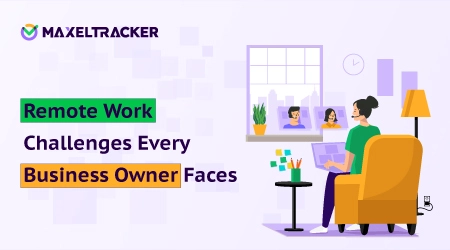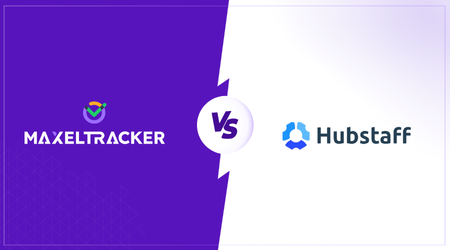

Employee training and development programs play a critical role in enhancing organizational performance. These programs help employees build new skills and improve the ones they already have. At the same time, they help managers build stronger, more productive teams and create a better work environment.
One of the biggest benefits of training and development is better employee retention strategies. When employees are given chances to learn and grow, they’re more likely to stay with the company. This is good news, since hiring and training new people takes time and money. People who get regular opportunities to improve and move forward in their careers often feel more connected to their jobs.
It’s also helpful to know the difference between training and development. Training is usually a short-term program focused on teaching specific skills. It’s often used for new employees or for someone starting a new role. Development is a long-term process that includes coaching, learning, and guidance to help someone grow in their role over time.
In the next sections, we’ll look at how training and development can improve employee performance. We’ll cover how they help with productivity, lower turnover, support company culture, and share some tips on how to create strong training and development programs in your workplace.
Training and development programs are more than just onboarding tools—they play a key role in shaping how employees grow and perform within an organization. These programs help individuals feel more confident, stay up to date with industry standards, and prepare for bigger responsibilities. Let’s take a closer look at how they improve performance:
Training programs give employees the skills they need to take on more responsibilities or step into new roles. This is useful not only for promotions but also for creating a flexible workforce where team members can understand each other’s roles and fill in when needed. For example, an employee trained in another department’s process can work more efficiently across teams, improving collaboration and problem-solving. Apprenticeship programs are often used to train employees with the goal of preparing them for leadership or more advanced roles over time.
Industries are constantly changing, and so are the tools and systems used in daily work. Ongoing training ensures that employees stay informed about the latest industry trends, safety procedures, ethical guidelines, and technology updates. For instance, a marketing team might learn about new digital tools, while a manufacturing team may be trained on the latest safety regulations. Learning how to use updated systems or new software not only boosts efficiency but also reduces mistakes and downtime.
As more businesses shift to remote or hybrid work, employees need support in adjusting to this new way of working. Training sessions that focus on communication tools (like Zoom or Slack), time management, and staying productive from home can make a big difference. These programs also teach employees how to maintain a healthy work-life balance and follow company processes, even when they’re not in a traditional office setting, leading to smoother transitions and better overall performance.
Even experienced employees can benefit from revisiting important topics. Over time, key information from onboarding or past training sessions may be forgotten or overlooked. Regular refresher courses help bring that knowledge back to the surface. This includes training on topics like workplace safety, diversity and inclusion, legal compliance, or company policies. Refresher training helps maintain consistency across teams and keeps everyone aligned with company values and standards.
Training and development programs also help managers guide employee growth. During performance reviews, if a manager notices gaps in knowledge or skill, they can recommend relevant training. For example, an employee who struggles with time management might benefit from a course on productivity tools or planning strategies. This targeted approach not only supports the employee’s development but also improves overall team performance.
While technical skills help employees do their tasks, soft skills help them interact with others, solve problems, and stay calm under pressure. Training programs focused on soft skills—like communication, teamwork, emotional intelligence, and resilience—are just as important as technical training. These skills improve how employees work together, handle feedback, manage change, and maintain a positive attitude, all of which contribute to a stronger and more collaborative work environment.
Training and development programs do more than just pass on knowledge—they play a direct role in how efficiently employees work. When employees understand their roles, have the right skills, and feel supported, they’re more likely to work effectively and deliver better results. Below, we’ll explore how training contributes to productivity and how organizations can track its impact.
Before diving into the benefits, it’s important to understand how to track the results of training programs. Here are some practical ways organizations can evaluate whether these programs are making a difference:
Track Performance Outcomes Compare performance before and after training to see if employees are completing tasks more efficiently or accurately. Look for improvements in work quality, output, or speed.
Use Pre and Post-Training Assessments Have conversations or use questionnaires to understand what employees hope to gain from training before it begins, and assess what they learned afterward. This comparison helps measure knowledge gained and whether it’s being applied on the job.
Analyze Participation and Completion Data Review course engagement metrics—such as how much time employees spend on the training, how many complete it, and where drop-offs happen. This reveals how engaging and relevant the content is.
Conduct Polls and Interactive Quizzes Short quizzes or feedback polls during or after training sessions help gauge real-time learning and how much employees are absorbing. They can also make training more interactive and fun.
Now that we’ve covered how to measure effectiveness, let’s look at how training actually helps employees become more productive:
Training gives employees the skills and knowledge they need to complete tasks confidently and efficiently. Instead of wasting time figuring things out through trial and error, they understand the right steps from the start. It also helps teams collaborate better, as everyone is aligned on processes and expectations.
Training allows organizations to focus on the specific skills that matter most to their operations. Whether it’s mastering a new tool, improving communication, or learning compliance procedures, employees gain the exact knowledge they need to work better and faster.
As technology evolves and roles become more complex, ongoing training helps employees stay up to date. When learning is encouraged, employees are more likely to share ideas, suggest improvements, and take initiative—leading to faster progress and better performance across the board.
When employees know what they’re doing, they feel more confident and take more ownership of their work. They don’t hesitate to make decisions or try new approaches. This confidence also strengthens the manager-employee relationship, creating a more proactive and motivated team environment.
Training programs clearly outline what’s expected of employees in their roles. This helps reduce confusion, avoids duplication of work, and ensures that employees are focused on goals that align with company priorities. When people know what success looks like, they’re more likely to achieve it.
Employees who are offered development opportunities often feel valued and supported. This boosts morale and engagement, making them more enthusiastic and invested in their work. Engaged employees tend to be more productive because they care about their results and the success of the organization.
Employee turnover can be a major challenge for any organization. It’s expensive, time-consuming, and disruptive. One of the most effective ways to retain talent and reduce turnover is by offering consistent and meaningful training and development programs. When employees feel that their employer is genuinely invested in their growth, they’re more likely to stay and thrive in their roles. Here's how training and development help retain employees:
When an organization consistently provides training and development opportunities, it sends a strong message that it values its employees’ long-term career goals. This fosters a sense of loyalty and motivation. Employees are more likely to stay when they see clear paths for advancement, especially if they believe the company supports their ambitions. Promoting from within also reduces the cost of hiring new talent and helps maintain team continuity.
Routine tasks and a lack of new challenges can lead to disengagement and burnout. Training programs help break that cycle by introducing fresh ideas and new skills. When employees are encouraged to grow, take on new challenges, or even explore different roles within the organization, it keeps their workday interesting. This sense of renewal and learning helps maintain morale—especially for long-serving team members who may otherwise feel stuck or stagnant.
Development programs that help employees build new skills also build their confidence. When people feel more capable in their roles, they are more likely to perform well and feel satisfied with their jobs. Confidence fosters engagement, and engaged employees are less likely to seek out new roles elsewhere. Plus, when managers are trained to recognize and support employees' progress, it reinforces a culture of appreciation and support.
In today’s job market, employees often look beyond salary when considering whether to join—or stay with—a company. Training and development opportunities are a powerful incentive. When organizations present them as a benefit during the hiring process, they can attract top talent and create a reputation for being a great place to grow. These opportunities also encourage seasonal or part-time workers to return, creating a more stable workforce.
Many employees leave a job due to confusion about expectations, lack of structure, or insufficient support. Training programs help solve this by offering clear guidelines, defining processes, and reinforcing organizational policies. When employees understand their roles fully and know what’s expected of them, they’re more likely to feel comfortable, confident, and committed. This kind of clarity reduces early turnover and helps build a stable, well-informed team.
No matter what type of training and development programs an organization offers, they will only be effective if learning is ongoing and encouraged at every level. A culture that values continuous growth allows teams to adapt to changes, stay competitive, and develop skills that truly matter.
The impact of strong training and development programs reaches far beyond individual employees. When staff gain new skills and stay engaged in their roles, they tend to perform better and remain with the company longer. Managers become more confident in their teams, and overall productivity improves. This, in turn, benefits the organization through stronger performance and increased profitability.
To get the most out of these programs, organizations should focus on future-ready skills that support long-term goals. Training should also keep pace with changes in technology and be delivered in ways that are accessible, relevant, and practical.
In short, investing in employee development isn’t just about improving performance today—it’s about building a stronger, more capable team for the future.
👉 Sign up now at MaxelTracker.com and start transforming your team’s productivity today! 🚀
👉 Explore our pricing plans and features to find the perfect solution for your team’s productivity needs! 🚀
Related Blogs

15 Remote Work Challenges Every Business Owner Faces — And How to Solve Them
Remote work rings a familiar bell, and it offers flexibility and global reach as well. But for CEOs, HR heads, and other important position holders across countries like USA, UK, Canada, or UAE, it is often the bringer of stress.

Timecamp Alternatives & Competitors
MaxelTracker is an all-in-one workforce management platform that goes beyond project and task tracking. Monitor real-time activity, track attendance, and gain actionable productivity insights, all in one place.

Hubstaff Alternatives & Competitors
Your time tracking software serves as the control center for your team’s productivity. If it's lacking key features, like GPS tracking for mobile teams or other essential tools, it becomes difficult to manage performance effectively.